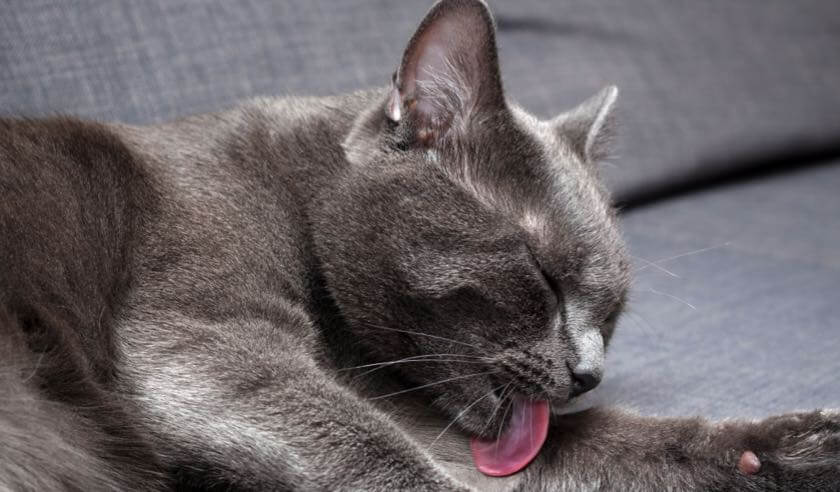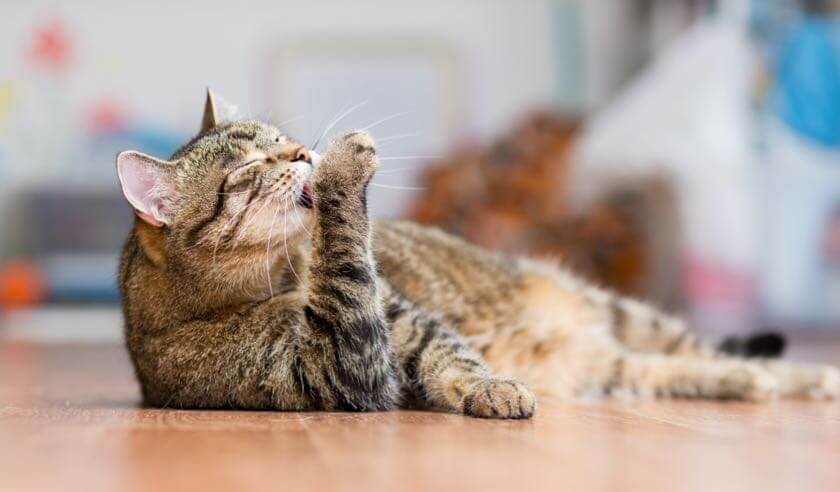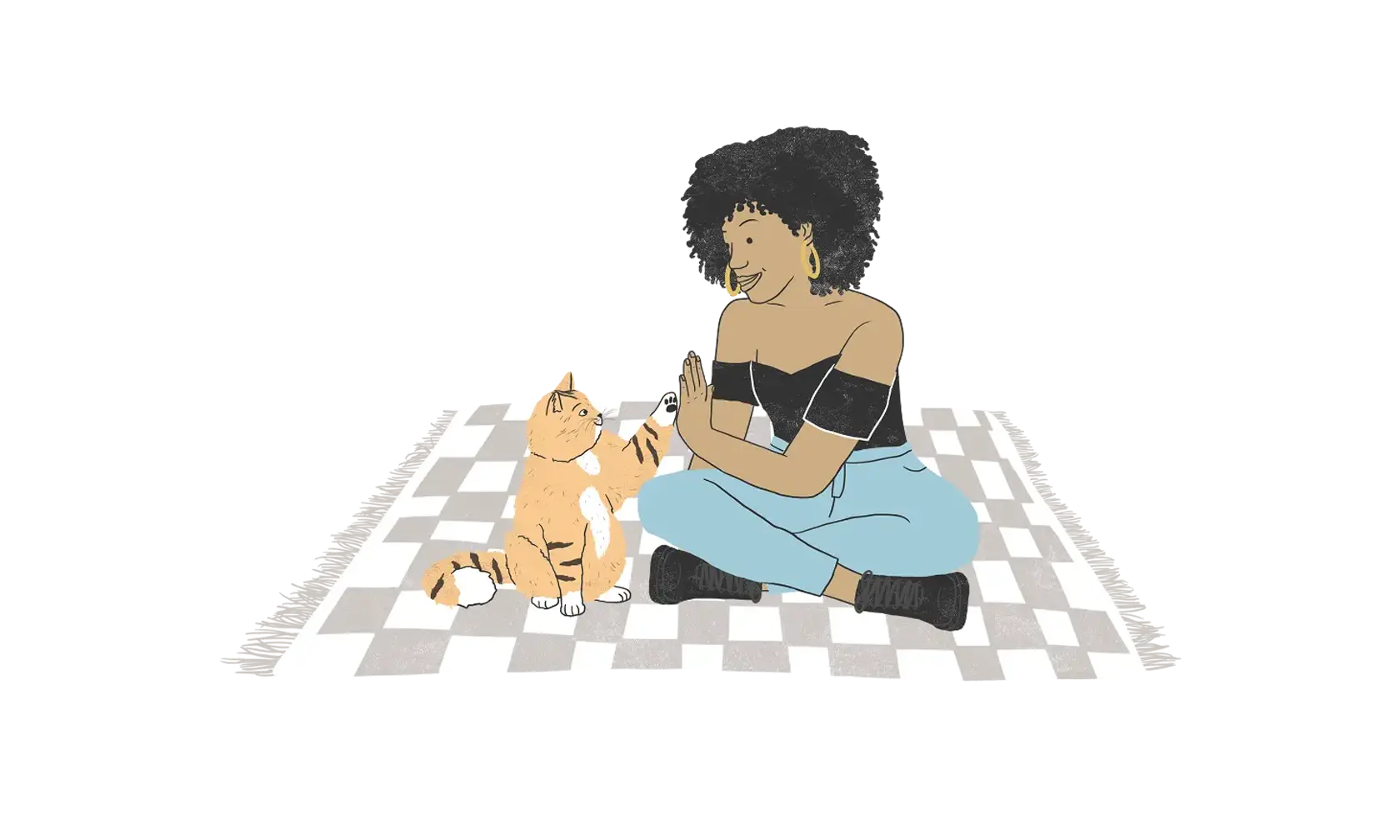While some cats love to be brushed, others may find it upsetting and it's a necessity for many breeds to keep their coats free of painful mats. Regardless of where your cat falls on this list, it's important to be able to brush your cat when needed. Here's the who, what, when, where, why, and how of brushing your cat.
Who Needs to be Brushed?
- Does my short-haired cat need to be brushed? While short-haired cats don't depend on brushing to keep their fur free of mats, it's still helpful to brush them from time to time to help distribute oils and keep their skin from getting too dry, remove dirt and loose fur, and keep them comfortable with this type of handling.
- Does my medium or long-haired cat need to be brushed? Yes. The longer your cat's hair, the more important brushing is. Longer hair is prone to matting which can be very painful and once a mat has developed, removing it can be stressful for you and your cat. Brushing also helps keep their coat clean and removes loose fur. This means they ingest less fur during self-grooming and are less likely to cough up hairballs.
- Do senior cats need more brushing than younger cats? Brushing senior cats can help with coat maintenance, especially if they have a harder time with self-grooming. Watch out for thin skin and sensitive areas and use a soft bristle brush to help with gentle brushing.
- Why do some cats hate being brushed? Petting can overstimulate many cats as they're overloaded with sensations — the same thing can happen with brushing. Your cat may also be sensitive because they've been forced to accept brushing when they didn't want it or in areas they didn't like. Or maybe they've just never been positively desensitized to the process.
What Kind of Brushes Can You Use for Cats?
- What is a slicker brush? Slicker brushes have wire prongs placed close together to remove loose hair and debris. Try running it along your arm. If it hurts, look for a duller option and be careful around sensitive areas or thin skin.
- What is a de-shedding brush? These are tools designed to reach undercoat hair. They're great at removing a lot of hair and can help significantly with shedding.
- What are soft-bristle brushes? These are similar to hairbrushes for people. The softness can make them less effective in removing fur and debris, especially with thick and long-haired breeds.
- What is a grooming glove? Like it sounds, this is a glove you wear with knobs or bristles on the palm. While they're great for getting your cat comfortable with brushing, they aren't going to do much to remove hair.
- What is a de-matter? These are special tools for removing or working through matted and tangled hair. If you have a long-haired cat, you may need a de-matter at some point. Be careful as they are very sharp and can cut you or your cat. Don't attempt to use a de-matter without proper training and on a completely calm cat.
- Should I use a grooming comb on my cat? Combs can be helpful for long and thick coats because they can reach down to the skin and pull the loose hair out of the undercoat. Make sure the edges aren't sharp and use a gentle touch.
When Should I Brush My Cat?
At what age should I start brushing my cat? It's great to start brushing cats as kittens, but it's never too late. See below for the steps to introduce your cat to brushing.
- How often should I brush my cat? This really depends on your cat. Indoor cats with short hair who self-groom often may only need occasional brushing. Indoor/outdoor cats, long-haired cats, or those who don't groom themselves well may need daily or weekly brushing. If you find it difficult to easily get the brush through your cat's coat, that's a good sign they need more regular brushing.
- When is my cat most open to brushing? Brush your cat when they're relaxed and mellow. They may be less responsive or willing to sit still if they're excited and running around.
- When is it best to have the groomer brush my cat? If your cat has matted fur and seems to feel pain or discomfort as you work through the mats, you might consider a groomer. Sometimes mats can be bad enough that a groomer needs to shave them. They have special tools and training to handle mats with care.
Where Should I Brush My Cat?
- Do I need to take my cat to a groomer for brushing? You certainly can, but it's best to get your cat comfortable enough that you can brush them at home as part of day-to-day care. This also helps maintain your groomer's work and can mean less frequent visits for professional grooming.
- Should I brush all of my cat's body? It's a good idea to get your cat comfortable being brushed everywhere, but respect their boundaries. With sensitive or less liked spots (such as their feet), limit brushing to just what's needed to keep their coat healthy and free of mats. Be careful around your cat's eyes. You don't have to brush your cat's entire body at once. If your cat gets antsy with longer sessions, do a little here and there. Consider using positive rewards after you brush your cat such as treats, playing with a toy or going outside.
Why Do Cats Need To Be Brushed?
Does brushing a cat help reduce shedding? Yes. Brushing helps reduce shedding and to remove loose fur, so it's less likely to be ingested by your cat or float around your home.
- What is matting? Matting is basically a clump of fur that comes together in knots or around debris or sticky substances like wet food or feces. It forms a tight ball that will pull on the cat's skin as they move. Matting on the backend is important because urine and fecal matter can be trapped in mats and cause skin issues. Most matting can irritate the skin and potentially cause skin infections, so it’s important to maintain your cat’s fur with brushing.
- Is matting painful for cats? The skin pulling that comes from matting can be quite painful, which is why cats often get upset when we try to brush or cut a mat out of their fur. It's like getting gum in your hair but much more uncomfortable.
How Do I Brush My Cat?
- Go slow at first. Try not to push your cat past their comfort zone and have lots of treats handy. Start by showing them the brush and letting them sniff it, followed by a treat. Let them rub against the brush or gently touch it to their head for just a second, then treat. Do a short stroke on the head or cheek, then treat. Increase the length of the stroke to the shoulders, treat, and so on. Gradually increase the area you're covering with the brush over multiple sessions, rewarding often. If your cat responds negatively at any point, just go back a step or two and move forward more slowly.
- Brush your cat in the direction of hair growth.
Remember to never force your cat to be brushed. If they're trying to leave the area, then you should stop the grooming session. When they're calmer, you can go through the slow desensitization process described above to turn brushing into a positive experience.
ZPC-02524





